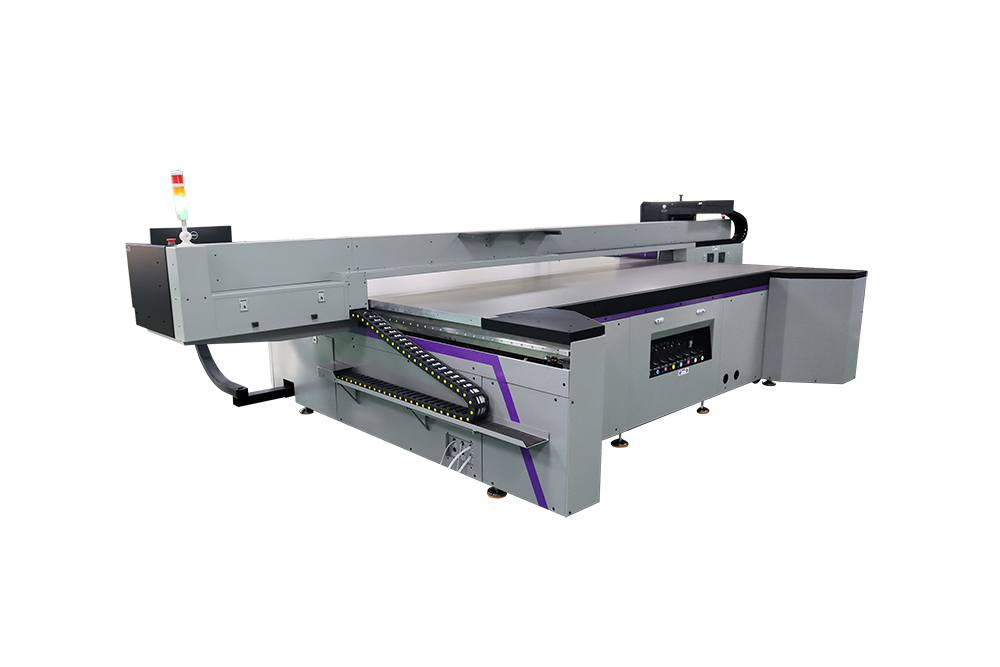What Materials Can a UV Flatbed Printer Print On
What Materials Can a UV Flatbed Printer Print On
UV flatbed printers, with their advanced UV curing technology, have revolutionized the printing industry by offering unprecedented versatility in the types of materials they can print on. These printers use ultraviolet light to instantly dry and cure the ink, allowing for printing on a wide range of materials that were traditionally difficult or impossible to print on with conventional methods.

One of the most common materials that UV flatbed printers can handle is rigid media, such as glass, metal, wood, and plastic. Glass, for instance, can be printed with vibrant images and text that are not only visually appealing but also highly durable. The UV inks bond strongly to the glass surface, resulting in prints that are resistant to fading, scratching, and even chemicals. Similarly, metal surfaces like aluminum, steel, or brass can be transformed into works of art with intricate designs and graphics.
Wood is another material that UV flatbed printers excel at printing on. Whether it’s plywood, MDF, or solid wood, these printers can produce stunning results, perfect for signage, furniture decoration, or even art installations. The inks penetrate deeply into the wood grain, ensuring a long-lasting and durable print.
Plastic materials, including PVC, acrylic, and polyester, are also compatible with UV flatbed printing. This opens up a wide range of applications, from printing on promotional items and displays to creating custom designs on product packaging. The versatility of plastics as a printing medium, combined with the durability and vibrancy of UV inks, makes them a popular choice for many businesses.
In addition to rigid media, UV flatbed printers can also handle flexible materials such as vinyl, canvas, and even fabrics. Vinyl banners and signs, for example, can be printed with sharp images and bright colors that are resistant to weathering and fading. Canvas prints, often used for fine art reproductions or photographic prints, benefit from the rich colors and fine detail that UV printing provides.
Fabrics, too, can be printed on using UV flatbed technology, albeit with some limitations compared to traditional textile printing methods. The key advantage of UV printing on fabrics is the speed and durability of the prints. However, it’s important to note that not all fabrics are suitable for UV printing, and pre-testing is recommended to ensure compatibility and desired results.
Furthermore, UV flatbed printers can also print on more unusual materials like ceramic and stone. Ceramic tiles, for instance, can be customized with unique designs or patterns using UV inks that are specially formulated to adhere to these surfaces. Similarly, natural stones like marble or granite can be engraved or printed on for decorative or commemorative purposes.
The versatility of UV flatbed printers doesn’t stop there. Depending on the model and configuration, these printers can also handle three-dimensional objects, printing directly on their curved or irregular surfaces. This capability opens up a whole new world of possibilities for product customization, from printing logos on promotional items to adding unique designs to consumer products.
It’s worth mentioning that the success of printing on any given material largely depends on the choice of inks and the printer’s capabilities. UV inks, specifically developed for flatbed printers, are formulated to adhere to a wide range of materials while maintaining color vibrancy and durability. However, it’s always advisable to conduct tests on a small sample of the material before committing to a large-scale print job.
Apart from the materials mentioned, there are numerous other surfaces that UV flatbed printers can potentially print on, depending on the ink compatibility and the printer’s specifications. The key is to understand the limitations and possibilities of both the printer and the inks used.
In conclusion, UV flatbed printers offer remarkable versatility in the types of materials they can print on. From rigid media like glass, metal, wood, and plastic, to flexible materials such as vinyl, canvas, and fabrics, these printers can produce high-quality, durable prints that are suitable for a wide range of applications. The ability to print on three-dimensional objects further expands their use cases. When considering a UV flatbed printer, it’s important to evaluate its capabilities, ink compatibility, and the specific requirements of the materials you intend to print on. With the right combination of printer, inks, and materials, UV flatbed printing can unlock a world of creative possibilities.
